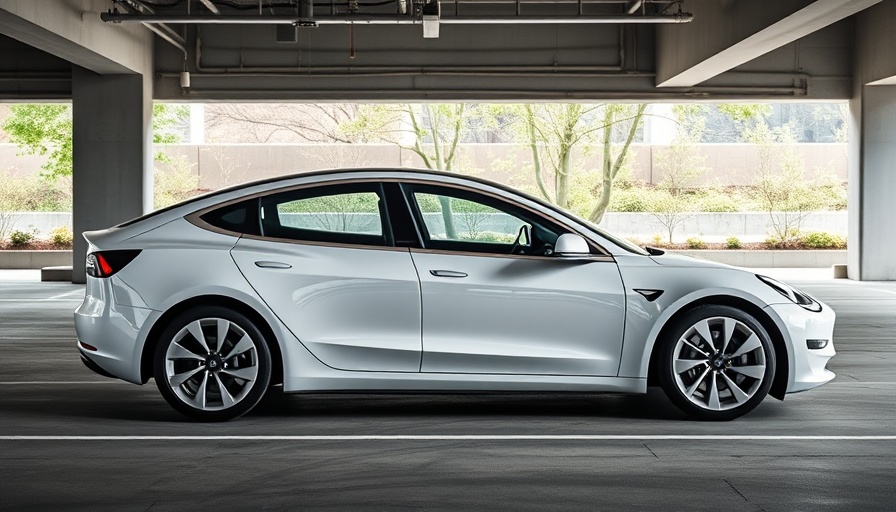
Understanding the Challenge of Odometer Fraud
As Tesla continues to redefine the automotive landscape with its cutting-edge technology, a disturbing issue is surfacing within its sleek, high-tech framework—odometer fraud. Unlike the mechanical rollbacks of yesteryear, today’s odometer manipulations are digital, subtle, and increasingly difficult to detect. This silent threat not only undermines the trust consumers place in these state-of-the-art vehicles, but it also raises substantial questions regarding resale values and warranty protections.
The Digital Landscape of Odometer Reporting
With Tesla's advanced algorithms, the odometer readings do not just reflect mileage. They attempt to provide a more comprehensive picture by factoring in driving conditions, terrain, and even individual driving habits. While this system is ingeniously designed to optimize vehicle performance, it can lead to discrepancies between actual mileage and what appears on the odometer. When two vehicles that have undergone the same journey show vastly different mileage, it raises eyebrows and concerns about the accuracy of this digital reporting.
The Implications of Inaccurate Odometer Readings
When odometer readings are inaccurate, the consequences extend far beyond mere confusion. Consider the story of Nyree Hinton, who is at the helm of a proposed class action lawsuit against Tesla. Hinton’s Model Y supposedly exceeded the warranty threshold of 50,000 miles, yet independent GPS logs indicated that actual mileage was significantly lower. This discrepancy not only jeopardizes warranty coverage but also incurs unnecessary financial burdens on drivers who are forced to confront early charges or unexpected repair costs. The legal ramifications of such practices can be severe, undermining both consumer trust and the integrity of the automotive market.
How to Protect Yourself: The Role of VIN Checks
As more Tesla vehicles enter the automotive market, the need for reliable odometer information becomes critical, especially for used car buyers. Tools like VIN Inspect are becoming indispensable, offering insights into past accidents, ownership history, and discrepancies in mileage. Even though VIN checks might not directly access Tesla’s internal data, they provide a window into the vehicle's history, helping protect buyers, especially when tackling the murky waters of private sales versus dealership transactions.
Understanding Algorithms: A Double-Edged Sword
Tesla’s odometer algorithms, while innovative, can inadvertently harm consumers. The “intelligent estimation” of mileage risks cutting short warranty periods due to exaggerated usage based on algorithmic guesses. In a world where trust in technology is paramount, ensuring that the systems designed to support consumers instead don't lead them astray is essential. The challenge lies in balancing innovation with accountability.
Relying on Lemon Laws and Consumer Protections
Lessee and buyer awareness of their rights is crucial in the face of potential odometer fraud. States across the U.S. have established lemon laws to protect consumers from faulty vehicles. While many buyers may be unaware of these legal protections, they can provide a safety net against the repercussions of misleading mileage practices. Understanding these legal frameworks can help consumers navigate complex issues arising from odometer discrepancies.
Future Predictions: Evolving Trust in Automotive Technology
The best way forward for automotive manufacturers, including Tesla, is to invest in transparency. As technology continues to advance, consumers will demand greater clarity in how mileage is reported and verified. There are innovations on the horizon aimed at providing external verification tools that may help counteract the failures of the current system. Building a future where trust coexists with technology will be vital for the longevity of manufacturers in a competitive market.
Your Roadmap for Safe Car Buying
For potential buyers in the automotive market, understanding the risks associated with digital odometers is paramount. Insisting on a thorough VIN check can illuminate potential red flags that may not be immediately apparent, mitigating the chance of falling prey to fraud. As you navigate the car buying experience, thorough research and an emphasis on integrity will serve invaluable in ensuring you make an informed purchase.
As the automotive industry leans more heavily on technology, it’s crucial for consumers to remain vigilant. Odometer fraud, while silent, can have a loud and lasting impact on your investment. Arm yourself with detailed information and take proactive steps to ensure your next car purchase is secure.
 Add Row
Add Row  Add
Add 




Write A Comment